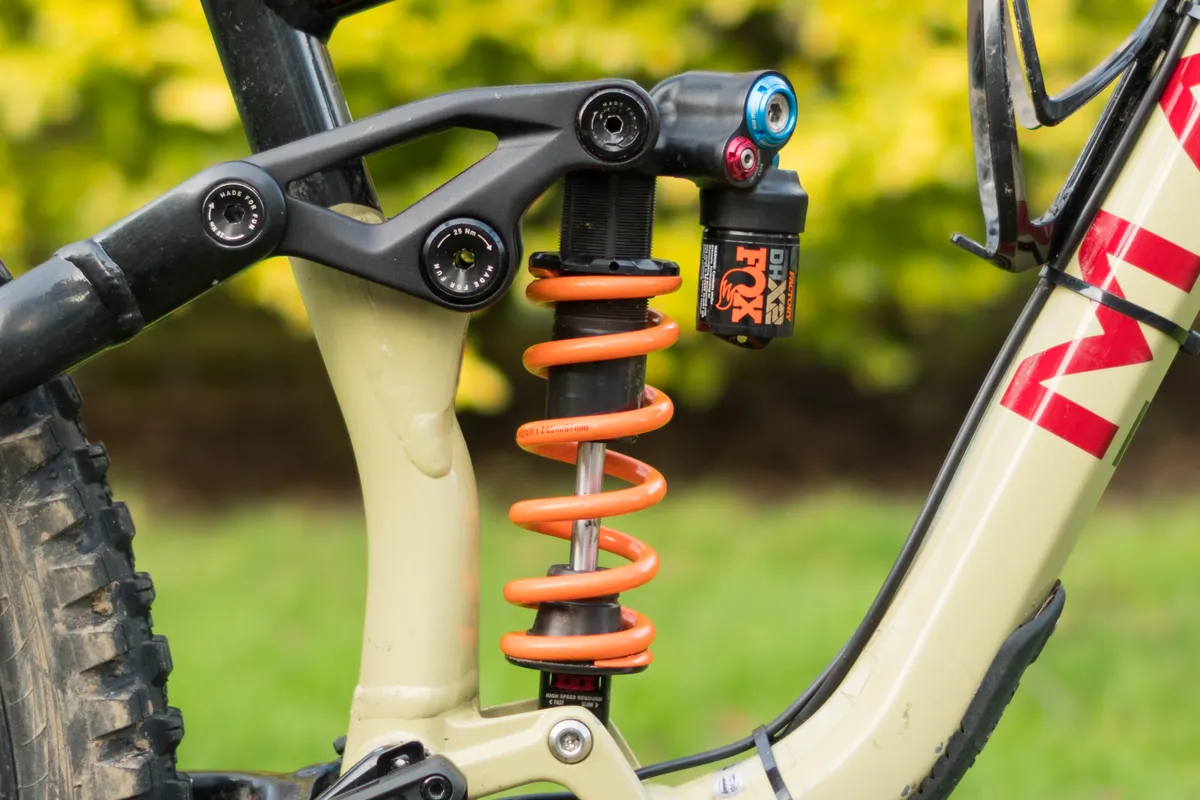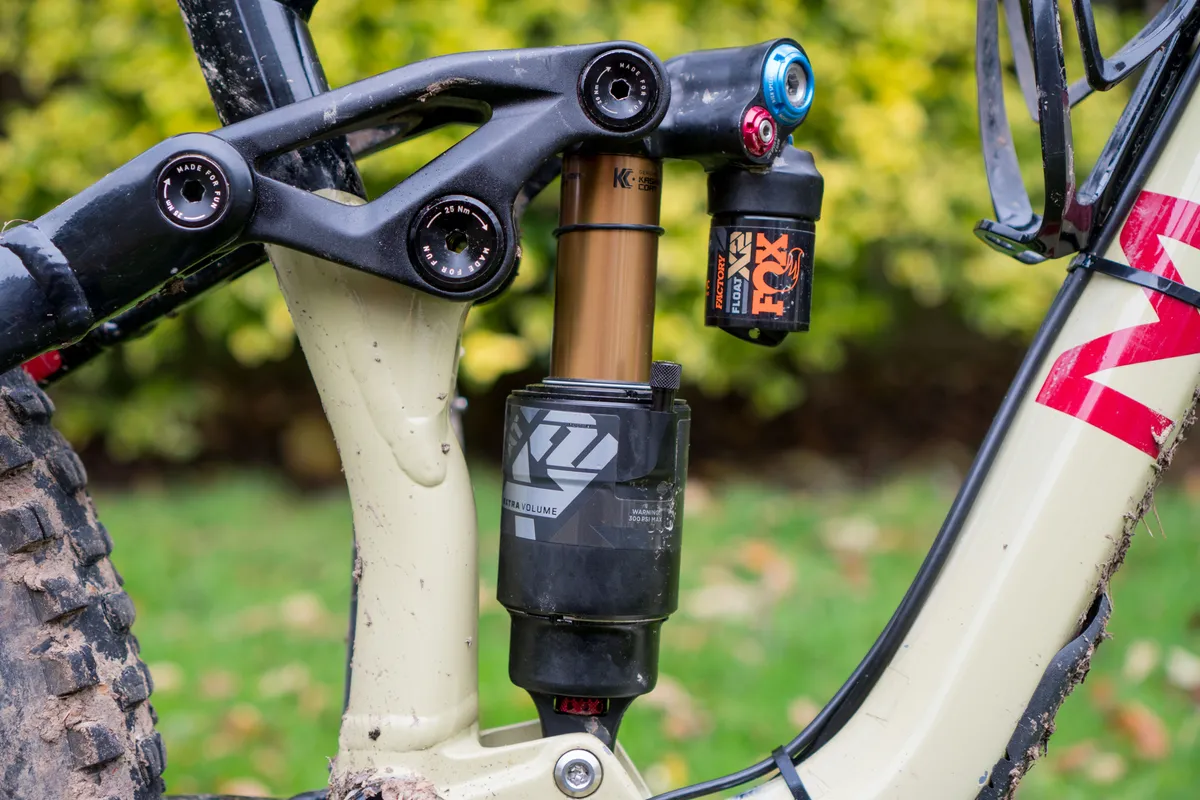Fox’s newest Float X rear shock is claimed to offer outstanding damper performance in a lighter-weight design than the highly adjustable and top-performing Float X2 shock I've already reviewed.
This range-topping model features a Kashima-coated stanchion with external low-speed rebound and compression adjustment.
It uses Fox’s extra volume (EVOL) air spring that can be tuned using volume-reducing spacers, supplied with the shock.
Fox Float X Factory rear shock specifications and details

Fox says this iteration has an all-new chassis (the shock’s body) and damper with a high-flow main piston, which equate to performance improvements. The external low-speed compression damping has 11 clicks of adjustment, while the low-speed rebound adjuster has 16 clicks.
There’s also a two-position lockout lever with a lock mode for pedalling and an open setting for everything else. The damper, Fox claims, will make less audible noise when riding compared to the DPX2 this shock supersedes.
Fox says the increase in main piston area requires less air pressure to generate the same spring force. Its air spring can be adjusted in 0.1in³ increments from 0.1in³ up to 1.0in³, making it highly adjustable and adaptable for many frame and suspension types.
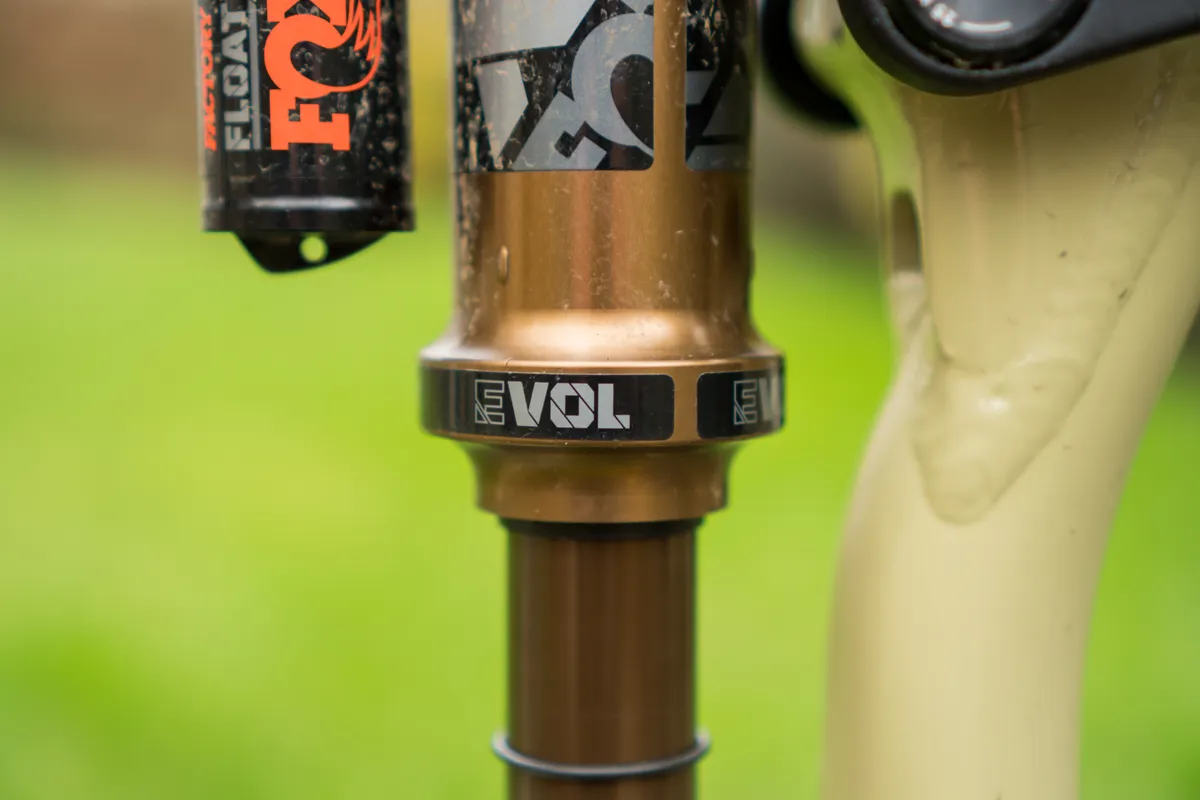
Also present is a hydraulic top-out spring and an MCU rubberised bottom-out bumper. The piggyback reservoir’s size is also tuned for each travel and shock size, according to how much oil is displaced during compression.
The 205x65mm trunnion mount Fox Float X Factory shock I tested weighed 507g on my scales.
Fox Float X Factory rear shock performance
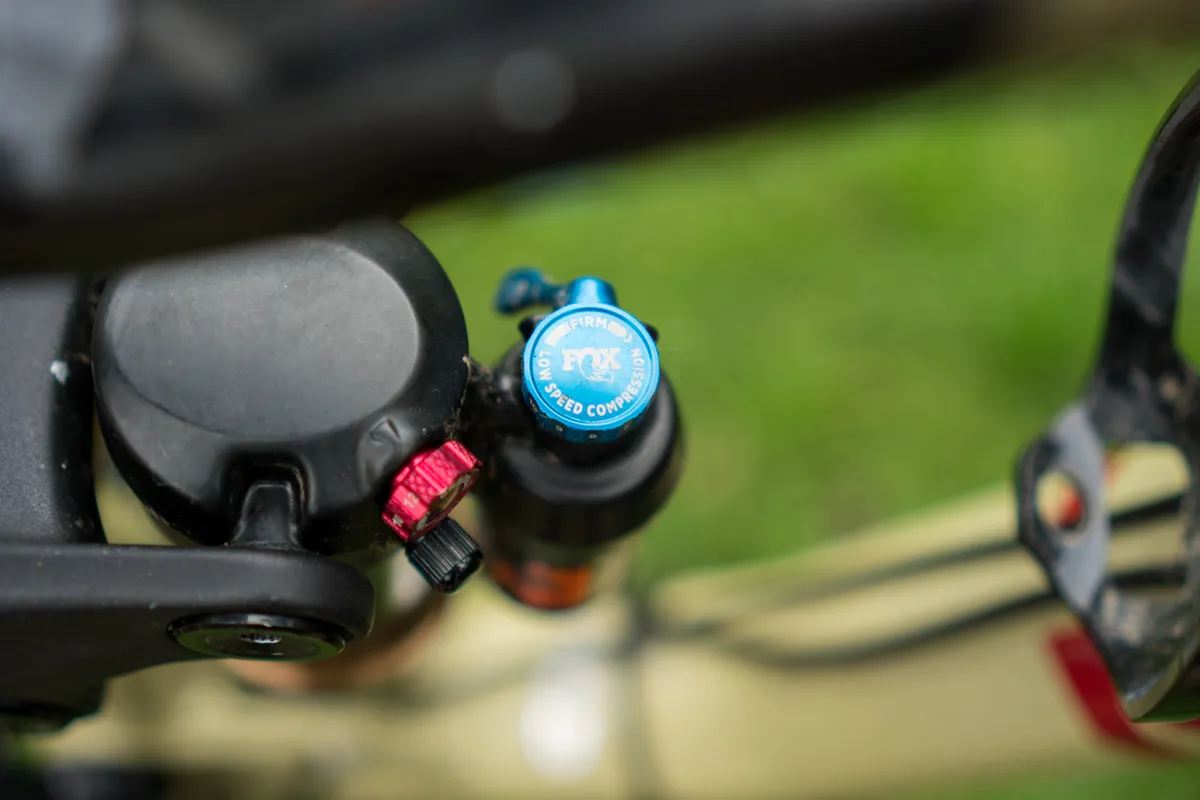
I tested the Float X Factory rear shock on a Marin Alpine Trail XR with 150mm of rear-wheel travel. The bike uses a four-bar suspension system and is roughly 17 per cent progressive. This makes it well-suited to the tuneable nature of air springs, where adding volume-reducer spacers increases spring progression.
I back-to-back tested the Float X with the Fox X2, DHX2 and DHX shocks, along with a RockShox Super Deluxe Ultimate that comes fitted on the bike from the factory.
Testing happened in the Tweed Valley on the same trails used for the UK’s round of the Enduro World Series, UK national downhill events and at the famous Glentress trail centre and beyond. The terrain was incredibly varied and put the shock thoroughly through its paces.
Fox Float X Factory rear shock setup

The aftermarket version of the Float X Factory rear shock I tested comes delivered with medium-rebound and compression-damping tunes. Initial testing revealed this tune, while offering reasonable performance, wasn’t entirely suited to the Marin’s kinematics, which required lighter compression and rebound tunes.
With the stock tune, I ended up struggling to find a compromise between having the spring rate soft enough to get the shock moving quickly on its compression stroke to not feel harsh, but having the rebound damping open enough and the spring forces high enough so the shock could rebound quickly, and not packing down in its travel, unable to return to its sag point ready for the next bump.
I was convinced a retune would open up a great deal of performance potential, so spoke to Fox and the company agreed to tune the damper to make it better suited to the Marin.
Shock retunes cost from £40 (in the UK) and most Fox service centres across the globe can do this work.
Fox was keen to point out its aftermarket shocks come tuned for the widest possible range of bikes, rider weights and riding styles, and it’s likely your bike will be suited to the stock tune.
In my opinion, it's worth factoring in the cost of a retune to the shock’s purchase price to get the best performance.
Once the shock had been retuned, I settled on 150psi in the air spring and fitted the orange 0.6in³ volume-reducer token, giving 18mm / 27.69 per cent of stroke sag for my 76kg kitted-up weight.
I initially set the low-speed compression and rebound to fully open, but in the end added three clicks of low-speed compression to help moderate low-speed shaft movement in berms and compressions.
Fox Float X Factory rear shock adjustability

The range of adjustability on the external dials is impressive, where even just a few clicks of low-speed compression or rebound damping had a marked effect on the way the shock performed.
Despite the depth of adjustment on offer, I found I wanted to keep the damping as open as possible to reduce the feelings of compression spike on high-speed chattery bumps and packing down on the rebound stroke, where the damping is too firm.
Although I did end up increasing the low-speed compression damping by a small amount (three clicks), I left the rebound adjuster fully open.
This hints that lighter riders might struggle to get their shock’s damping open enough for their needs or preferences, especially at low spring pressures, where rebound spring forces are reduced compared to higher pressures.
The spring volume is also highly adjustable. The extra-volume air spring is well-suited to volume adjustments, where adding spacers increases the progressivity of the spring. Adding spacers is quick and easy, and tool-free with the shock’s spring sleeve simply unthreading from its body.
Fox Float X Factory rear shock on-trail feel
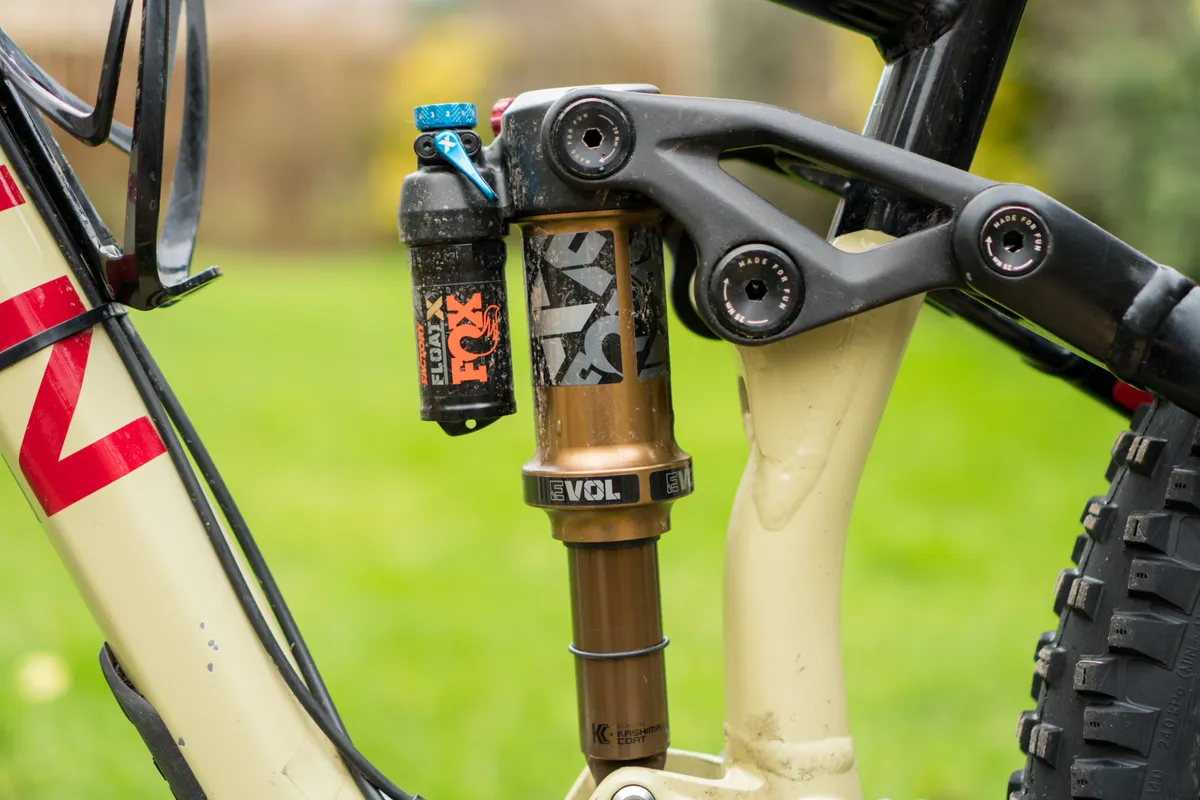
On the trail, the Float X Factory is extremely smooth, particularly once it's sitting at sag. Its plushness stands out as its dominant quality.
Hitting mid- to large-sized bumps including rocks, roots and braking bumps, it was ready to compress and absorb impacts, with no perceptible lag or stickiness as it compressed further into its travel.
Equally, there was no compression spiking on fast, successive hits, and the rebound speed – despite having the adjuster fully open – was just quick enough to allow the shock to recover for the next hit. This super-smooth action helped maintain chassis stability.

Its low-speed compression damping, coupled with the progressive air spring, helped maintain bike-chassis composure and prevented all the shock’s travel getting used up too quickly. This reduced nodding where the bike was less prone to pitching back and forth in and out of its suspension travel in medium-load large-radius turns, helping to improve control.
The support generated by the damper and spring was impressive, and it made the bike poppy and playful to ride. Loading it into the ground for grip to change direction followed by being light to float over bumps felt intuitive and natural.
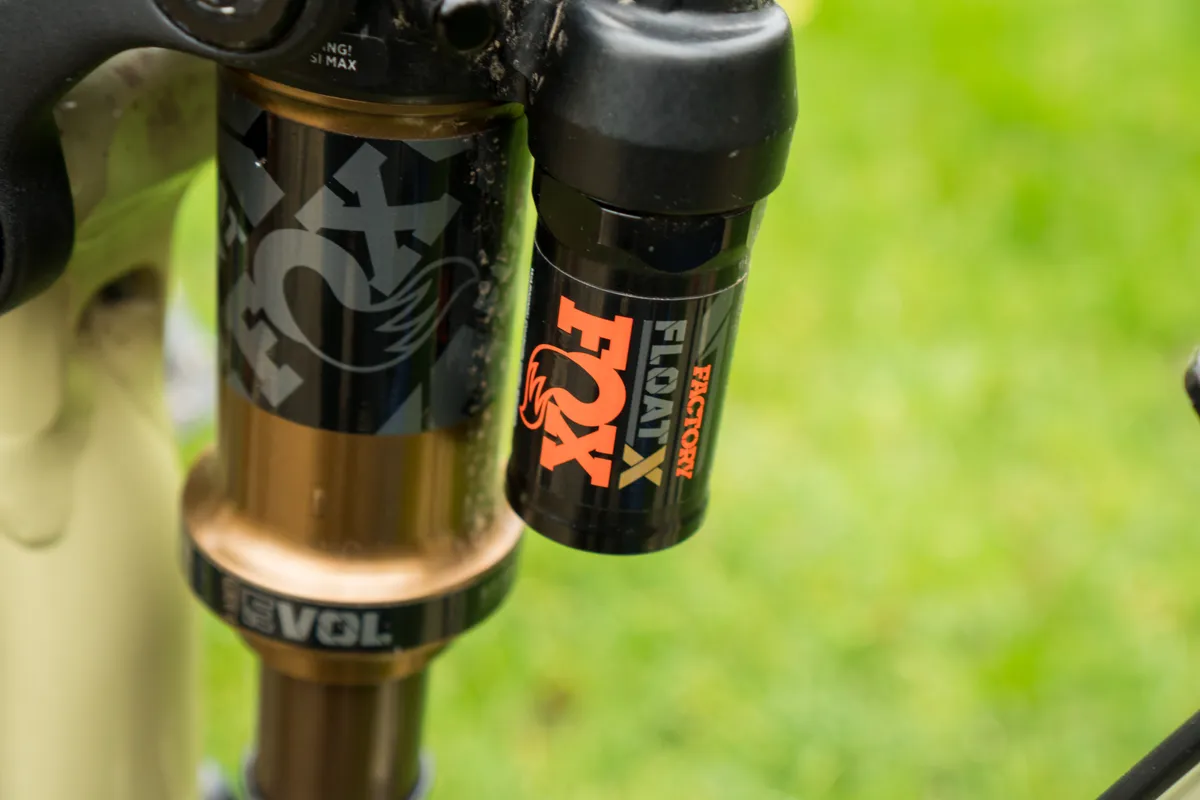
The adjustable-volume air spring created a gradually progressive ramp-up, with no sudden and perceptible increase in the forces needed to compress the shock. Instead, the shock came in for a ‘soft landing’ as it reached the last portion of its travel and bottom out.
The climb lever’s lockout was strong enough to prop the bike up in its travel once it had extended beyond the sag point. This was good for preserving geometry on steeper climbs, but meant that traction was reduced on rougher sections, limiting its practical application.
I found the damper to be quite noisy on longer descents once some heat had built up in its body. From a performance perspective, the noise didn’t appear to change anything, and I couldn’t feel any damper fade on particularly gruelling descents.
How does the Fox Float X Factory rear shock compare?
Off-the-top smoothness wasn’t quite as good as the DHX or DHX2 coil shocks and was marginally worse-feeling than the X2. The very first part of its travel did require some force to overcome, and was most noticeable on small, rough chatter, typically found on well-worn trail centre surfaces.
On the same sections of trail, the other shocks moved more freely, improving comfort compared to the Float X. While comfort was marginally reduced, traction, and therefore speed and control, weren’t.
Fox Float X Factory rear shock bottom line
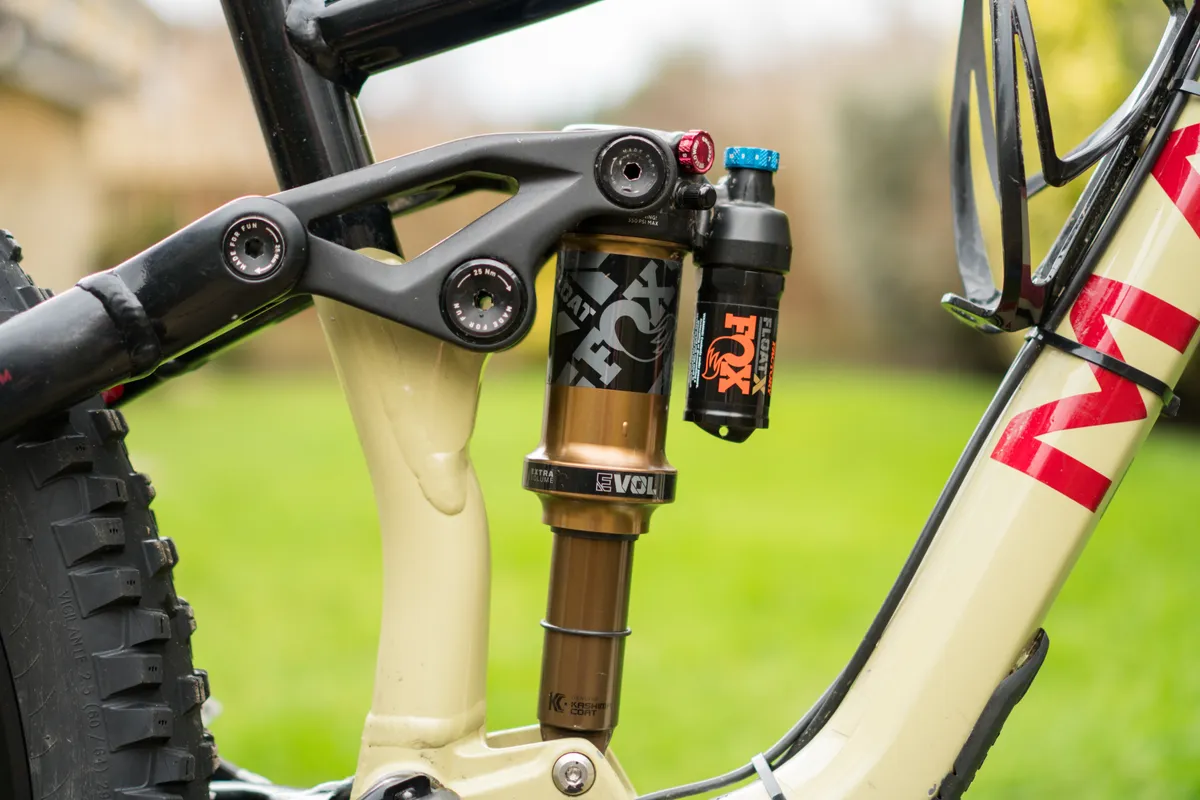
The Float X Factory shock is vastly impressive given its intended trail-riding application. It’s not quite as smooth at the start of its travel as the Float X2, and isn’t as adjustable, but matches it in terms of mid-stroke and bottom-out performance. To boot, the Float X is 157g lighter and costs £110 less than the same-sized X2.
Its performance certainly outstrips the limits those headline figures should impose, and if weight and cost are your main concerns, there’s little to say against it. I recommend finding out whether the stock tune is suitable for your bike’s kinematics, otherwise accessing the performance I experienced might require a retune.
For the price and weight, there’s little out there that can top the Float X’s performance.
Product
| Brand | fox |
| Price | 799.00 EUR,659.00 GBP,569.00 USD |
| Weight | 507.0000, GRAM (205x65) - 205x65 |
| br_whatWeTested | Fox Float X Factory 205x65 |
Features
| br_spring | air |
| br_lockout | yes |
| br_travel | 65.0000 |
| br_travel | MILLIMETER |
| Features | 2-position lock-out; MCU bottom out bumper; hydraulic top-out |
| br_damperAdjust | Low-speed rebound and compression damping |
